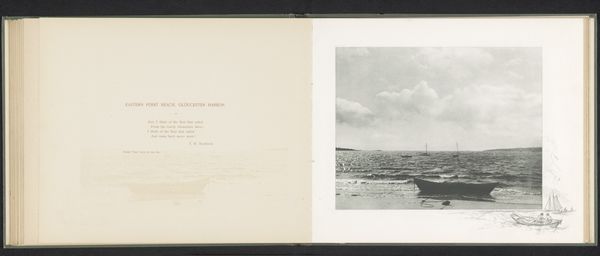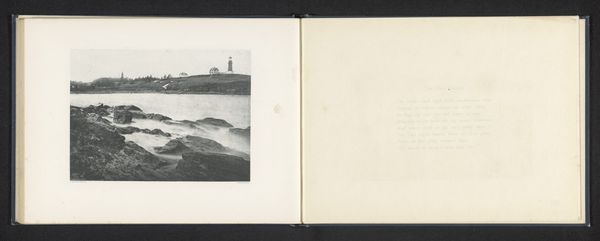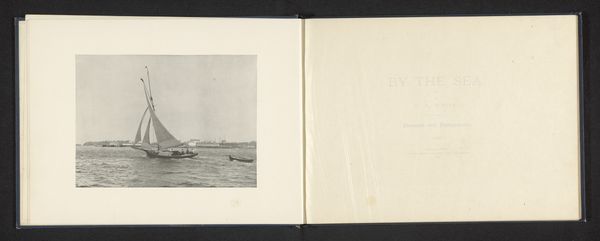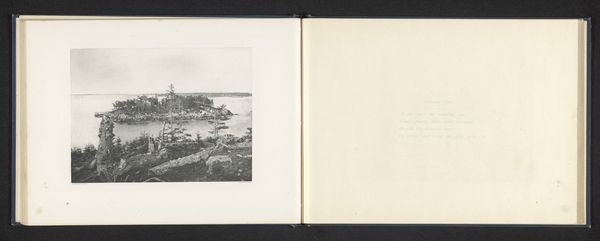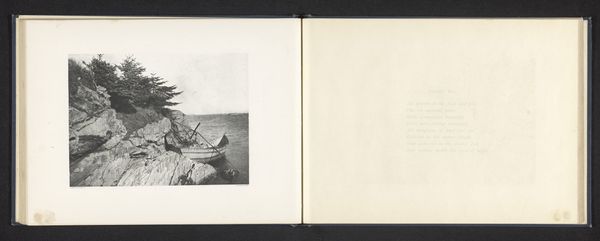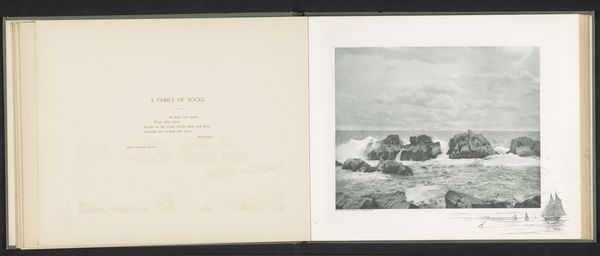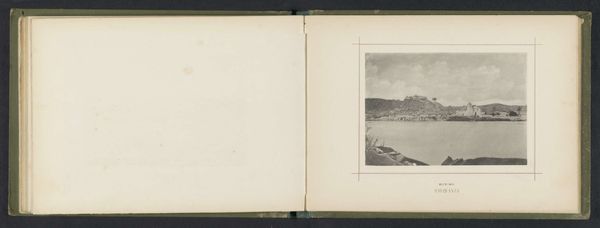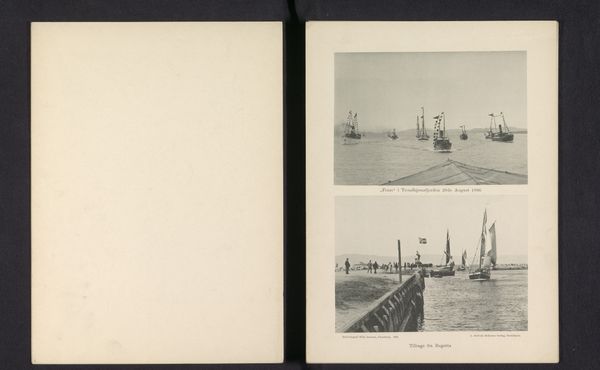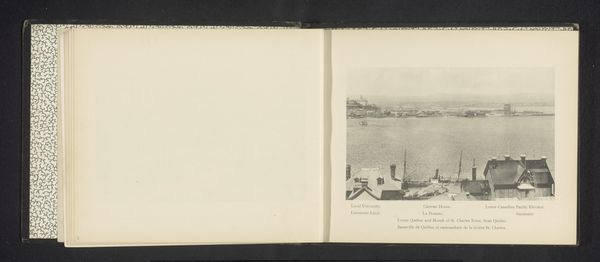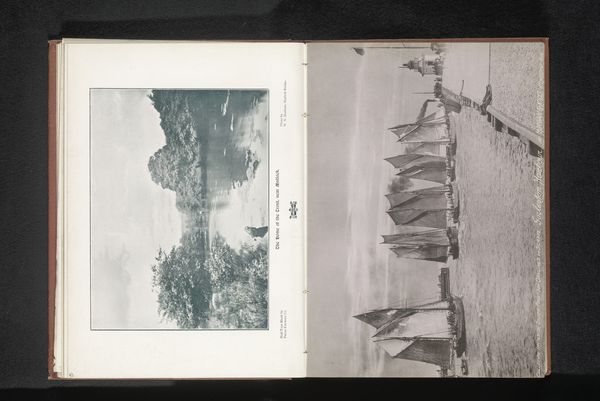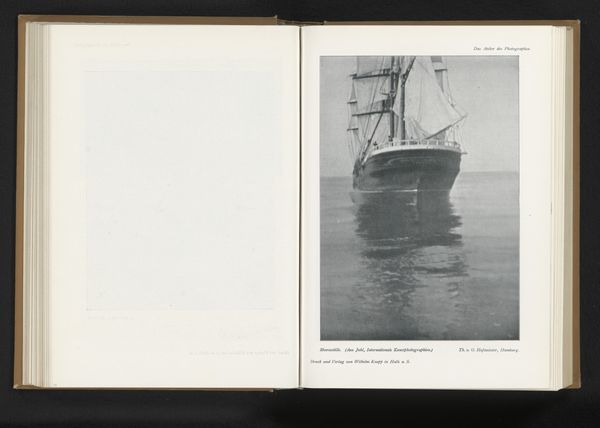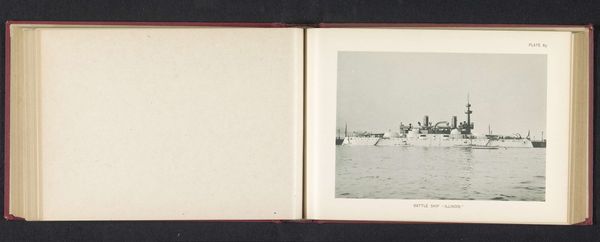
#
script typeface
#
script typography
#
hand drawn type
#
personal journal design
#
personal sketchbook
#
hand-drawn typeface
#
journal
#
stylized text
#
delicate typography
#
historical font
#
sea
Dimensions: height 125 mm, width 188 mm
Copyright: Rijks Museum: Open Domain
Editor: This is an image called "Gezicht op golven die tegen een golfbreker slaan," or "View of Waves Crashing Against a Breakwater," taken by Henry William Cave, probably between 1890 and 1910. The intensity of the waves is captivating, almost violent. What stands out to you about this image? Curator: The stark materiality is key. It's not just about depicting the sea, but revealing the social and industrial context through which that image was captured. The photograph itself – its paper, the chemicals used in its development – these speak to specific economic and technological conditions. Who had access to such technology at the time? What was the labour involved in creating and distributing such images? Editor: So, you're saying it's more about the making than the image itself? Curator: Precisely. The process is part of the meaning. The very act of documenting this scene – waves crashing against a man-made structure – highlights a relationship between nature and industry, control and chaos. Look at the breakwater itself – a testament to human intervention – juxtaposed against the untamed power of the ocean. Consider also the intended audience of this photo, and what their place was within this system of production. Who would want to buy such a picture, and why? Editor: That's a fascinating point. I hadn't considered the consumer. How the materials and production relate to that dynamic. Curator: Yes, by interrogating the materials and their production, we are better able to see the social and economic relations embedded within this photograph. Editor: Thanks. It's changed my perspective. Seeing beyond just the aesthetic into a complex industrial process. Curator: My pleasure. Considering the context of artistic creation reveals a wealth of untold stories.
Comments
No comments
Be the first to comment and join the conversation on the ultimate creative platform.
